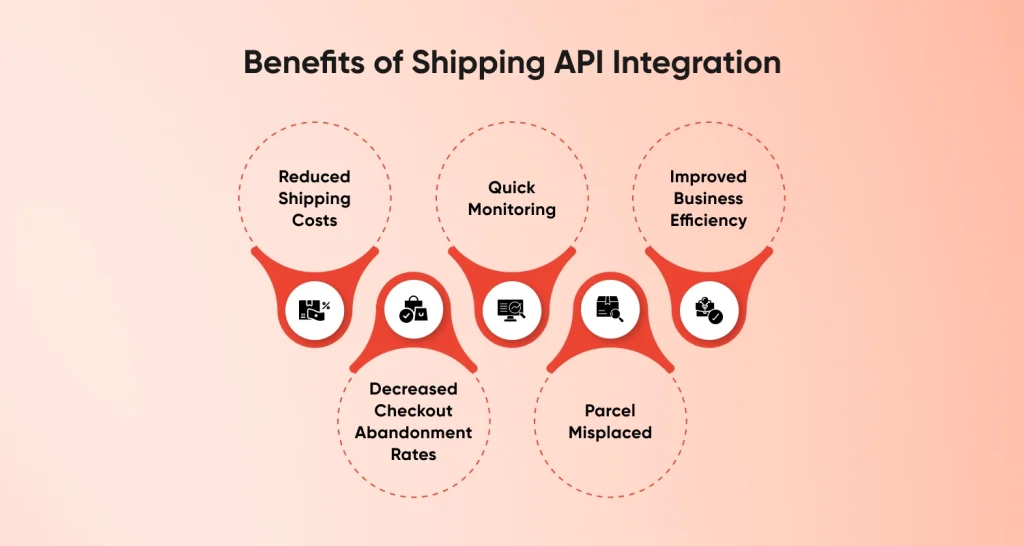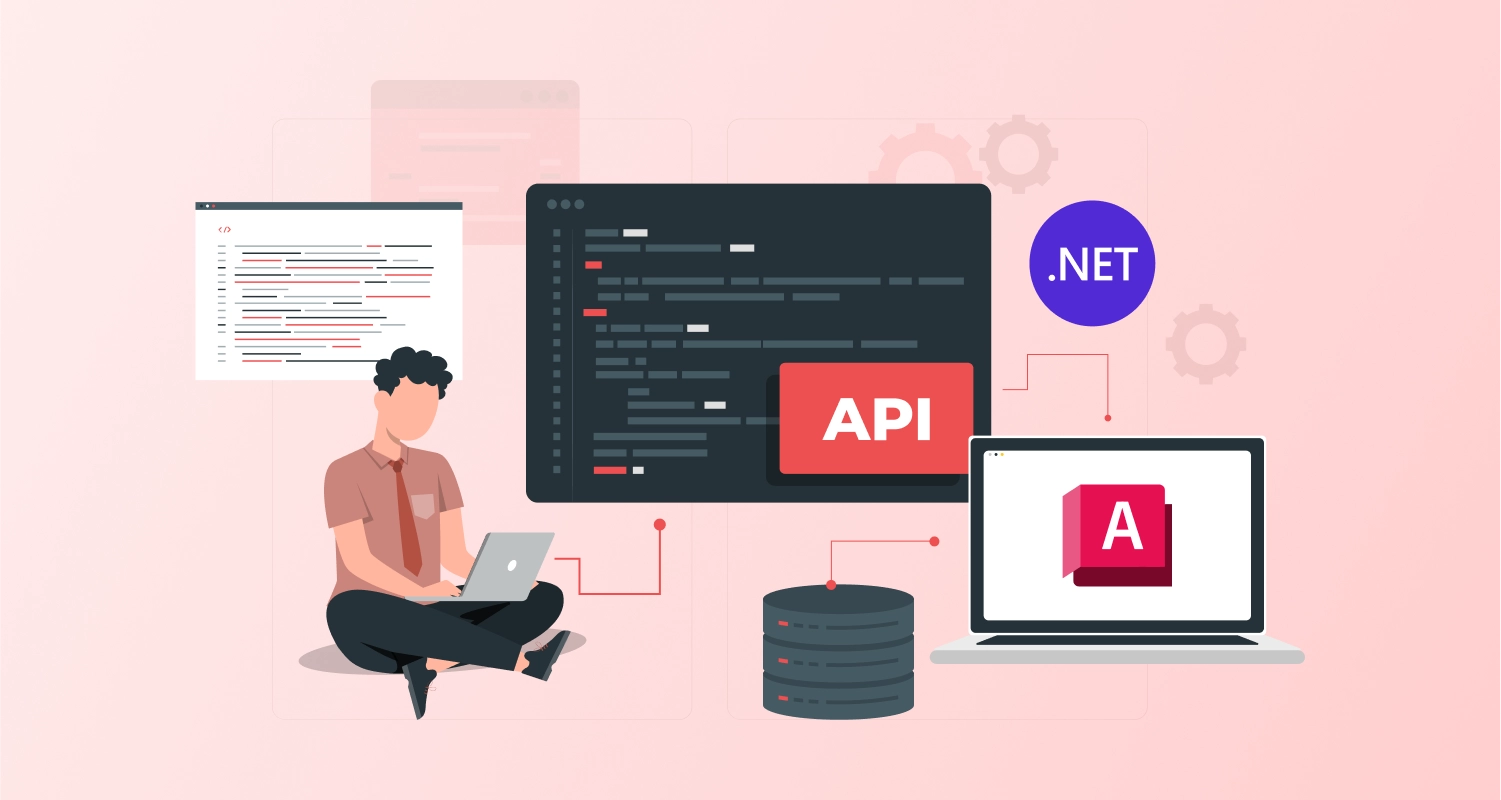A programming tool that can assist in connecting specific platforms, software, and programs is called an API, or application programming interface. The majority of platforms typically have their APIs that serve certain purposes. Companies now use API integration services for social media platforms, streaming websites, and weather apps.
For instance, Facebook uses its platform’s Messenger API integrations. These are instances from mainstream media. Thanks to the API, which facilitates the chat, users can engage and converse with one another. YouTube displays videos on all third-party platforms through the usage of APIs. These APIs facilitate engagement and facilitate communication. Today, many applications use APIs to display user data and carry out certain tasks.
This article examines shipping API for eCommerce and the function that they now serve in businesses. The evolution of these APIs over time and the range of applications they serve will be discussed in this article.
What is a Shipping API?
In a survey, 46% of respondents said that one of the most crucial factors they take into account when selecting a store is reliability. Thus, activities like tracking down misplaced items and keeping delivery dates on track are essential for success.
You can dispatch orders more quickly and correctly by using shipping APIs. We’ll talk more about what API shipping is and how it can benefit your company.
Using a shipping API, you may link your company’s system to several delivery and transportation companies.
The primary goal of utilizing this type of API is to efficiently oversee the delivery process. We’ll go over many of the benefits of shipping API in this post. Before anything else, nonetheless, one must comprehend its operation and the situations in which businesses employ it.
You can link your application to the shipping firm servers with the use of a shipping API. This utility makes sure that this connection and any further interactions between the applications happen automatically, requiring no human involvement. API increases efficiency, simplifies processes, and permits online monitoring.
Benefits of Shipping API Integration

The rapid growth of digitalization and APIs would not have occurred if the people who invested in their implementation had not benefited from them. Currently, cutting-edge technology-driven logistics software development companies are enjoying the following advantages.
Reduced Shipping Costs
Because so many businesses offer the services, different shipping APIs have better shipping rates. For instance, you can save money on FedEx and USPS packages by using certain APIs. As a result, you save money on operating expenses, which you can then utilize to improve business efficiency. By raising customer happiness, they also help clients save money.
Decreased Checkout Abandonment Rates
One of the key objectives for many companies is to lower the rate of checkout abandonment. Apart from discontentment with the visual aspect and the workflow, the customer could object to the conditions of delivery and withdraw from the transaction before it is finished. Businesses can give their clients better bargains by taking advantage of the enhanced delivery API options and prices. They won’t be able to find another seller and abandon the shopping cart as a result.
Quick Monitoring
Clients want to know what happens to the things they order during delivery and where they are located. You can use real-time shipment tracking API in software applications, emails, or text messages, according to different suppliers. As fewer customers inquire about the status of their products overall, you will not only meet consumer requests but also lessen the workload on customer service.
Parcel Misplaced
For logistics companies, losing packages or sending them to addresses that don’t exist is a major issue. Deliveries at the correct address are crucial for cost savings and boosting customer loyalty. Businesses incur costs when they have to send a new package or redeliver a returned one. Furthermore, poor delivery undermines the trust that customers have in your company. Addresses to which a delivery will be made can be automatically verified and checked using delivery APIs.
Improved Business Efficiency
APIs give a firm a much-needed boost in ways other than merely financial benefits. These are the primary instruments for streamlining regular pipelines or optimizing internal operations, the latter of which are not as important. This frees up funds and time that could be allocated to other important corporate objectives.

3 Common Shipping APIs
E-commerce retailers should be aware of the fact that not all APIs are created equal.
Different APIs support businesses in different ways and have varying capabilities.
You should pay particular attention to these three popular shipping APIs because they benefit both your company and your clients.
1. Verification of Addresses
Since they are people, your clients are prone to error. This includes the possibility that when they enter their address on your e-commerce site, they will make a typo. But this error only costs you money if you don’t have the right equipment assembled.
These expenses go beyond simply printing fresh shipping labels. In addition, labor costs for processing returns and completing additional orders are incurred; additionally, a negative customer experience may result in missed opportunities for future sales from that client.
Address validation is included in the connection of your e-commerce store with Shippo’s shipping API. This implies that when a consumer enters their address during the checkout process, the Shippo API will automatically run in the background and verify that the address is valid by cross-referencing it with the USPS database.
Additionally, it will assist in distinguishing between a home and a commercial address, which may eventually influence the shipping options and/or costs for your consumers.
2. Multicarrier Support
The adage “Don’t put all your eggs in one basket” is probably familiar to you. You may apply the same logic to sending all of your items via a single carrier.
Based on the package’s weight, size, destination, shipping distance, and desired delivery time, each carrier will determine the exact cost of shipping. As a result, the best carrier to ship with can vary based on the item being sent, the destination, and the customer’s tolerance for waiting.
You can compare shipping costs from several carriers on the same platform by using the best shipping API that supports various carriers. Even better, you may program the system to automatically choose the fastest shipping option for one order and the lowest-cost shipping option for another. This can expedite the fulfillment process and save your company time.
Additionally, a shipping API may retrieve real-time rates from several carriers and display them to your clients so they can choose from a variety of shipping choices.
3. Tracking of Shipments
When was the last that you ordered online? You likely attempted to inquire about the whereabouts of your package during its journey. It is a fact that 3.5 times for each order, internet customers check their order tracking pages.
Customers who shop online anticipate shipment monitoring. If it’s not supplied, it may soon overflow the inbox of your customer support staff.
Your company may automatically maintain those touch points throughout the product lifecycle and improve the post-purchase experience for customers by implementing a shipping API with tracking notifications.
A shipping API’s flexibility allows it to be integrated with your existing customer outreach tools, keeping you and your clients informed without requiring you to respond to any questions.
How Can Your Product Use Shipping API Integration?
You may get extensive information about shipping API integration services on the websites of some of the bigger, more reputable businesses. However, an expert who understands all the technical nuances must select your API.
Hiring a group of engineers for web API development with certified logistics knowledge is necessary for integrating a shipping API, and the work at hand won’t be simple. It can take a few weeks to many months, and significant money commitments might be needed.
How to Operate APIs for Shipping?
Whenever a shipping API is connected with an application, it operates in the background. Data is retrieved from an external server, translated, and then presented on the platform you are using.
Since this is the most popular API technique, you’ll frequently come across the term REST API when searching for a shipping API solution. This approach entails your eCommerce site requesting data from a third-party server. The API will reply with that data inside your website after receiving a response.
Consider it in this context. You’re attempting to ask someone in a foreign country to do something for you, but you don’t know their language. You would have to ask your interpreter for something.
After gathering information from that individual, the translator would reply to you in your mother tongue. In this case, the API would essentially serve as the translator.
Additionally, shipping APIs include documentation that explains how to integrate the API and maximize its benefits to the engineers on your team. The following will be covered in the documentation:
Top Shipping API Integrations
The sheer volume of possibilities available might easily cause one to become overwhelmed when searching for the finest shipping API.
However, based on the shipping carrier, you’ll frequently be presented with the following options when considering the variables we outlined above for selecting a shipping API:
UPS Programming Interface
One of the simplest APIs to incorporate into your website is the UPS API. Extensible Markup Language (XML), which is used by three different sorts of APIs, is sufficiently widely used that the developers working for your company will be familiar with it. Additionally well-documented, the API ought to facilitate integration.
API FedEx
Because it is offered as a REST API, the FedEx API is also easy to utilize for developers. It handles requests responds using JSON and authenticates using OAuth 2.0. Since rest APIs are among the most popular, people with experience in other APIs may find this to be a decent option.
API DHL
For the same functionality as the FedEx API, the DHL API is likewise offered as a REST API and supports JSON and OAuth 2.0. It is a flexible solution for those building up integrations because it also supports XML.
USPS Application
The USPS API is just as feature-rich as FedEx and DHL, but its lack of resources is what sets it apart the most. This somewhat increases the setup difficulty.
Conclusion
In terms of supply chain management and shipping solutions, API integrations simplify everything. Shipping APIs are in action even before an order is placed. They are meant to assist in informing both you and your clients at every stage of each order’s lifecycle.
With API integrations, you can create orders almost instantly, enable packing and picking, make sure the order is picked up, follow the order to its destination, make sure the delivery is successful, and even enable improved returns. You gain further benefits by using a multi-carrier integration platform. An efficient logistics software development company like CMARIX provides simple solutions and deployment to maximize the ROI of eCommerce Shipping APIs and integration at the lowest possible cost.
Frequently Asked Questions
What Are the Key Features of a Shipping API?
Customers can customize shipping choices, such as personalized mailing labels or unique sending instructions, to meet their unique requirements.
The program works with supply chain management, transportation, and e-commerce software.
By offering precise shipping prices depending on package information, destination, and service type, it functions as a shipping calculator API.
Shipping labels can be generated easily using the API thanks to the label generation capability.
Real-time parcel tracking and delivery status updates are provided by the software.
International shipment is made easier with computerized customs paperwork.
Customizing shipping choices, labels, and service options to match particular company requirements is made possible by this API.
How Do I Integrate a Shipping API into My E-commerce Platform?
Select an API based on what your business requires. Register for an API key: To access most APIs, you must first register for an API key. This is a special code that lets you use the API and monitor how much you use it. To register for an API key, according to the guidelines supplied by the API provider.
Can I Use the Shipping API for International Shipments?
You may process and submit package shipping requests to FedEx for both domestic and international shipments, as well as return shipments, by using the Ship API. Every shipment request will include a comprehensive package and shipment information.
What Kind of Support Is Available for Developers Using the Shipping API?
The Amazon shipment API is made to handle use cases involving outbound shipments for purchases that come from external channels and marketplaces in addition to those operated by Amazon. You can initiate shipments, cancel shipments, track shipments, and get shipping rates using these APIs.







